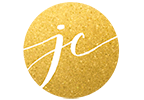
03 Feb A Summary of the Second Year of Paper Sloyd
Not to be dramatic, but I feel somewhat triumphant, as we have just completed our second year of paper sloyd. As a homeschooler, I had read about the importance of sloyd, but it was this mysterious mountain that I was too overwhelmed to climb. I didn’t have a solid understanding of what sloyd really was, I didn’t understand the purpose of it, and I couldn’t imagine adding another thing into our already busy schedules.
Last year, I decided to buckle down and face my fear. I dug deep, learning all about this subject. The more I learned, the more I realized that we had been missing out on something of value. So along with two children, now pre-teens, we tackled sloyd. I bought the book, Paper Sloyd for Primary Grades by Ednah Anne Rich, along with some simple supplies (most we already owned), and we began working through the book. Shortly into the first year, we were hooked.
The Benefits of Sloyd Are Starting to Show
The children started asking to do sloyd. They began doing sloyd on their own time, for their own purposes. They wrote letters and made their own envelopes, they made little boxes to incorporate into their play. But it wasn’t in sloyd that I noticed a difference. The benefits discussed by Charlotte Mason began to surface. My children’s interest in TV and tablets began to wane drastically. They took up crafts and hobbies of all kinds – not just crafts that we had learned, but others that they were interested in. I began seeing more accuracy and care taken in their copywork and writing. They even began cleaning up after themselves without being told. I don’t know if I can directly attribute all of these growing habits to sloyd, but they do seem to be associated, and I couldn’t be happier!
Differences Between First and Second Year
There are a few differences between the first year of paper sloyd and the second year of paper sloyd. The most obvious is that each model continues to advance the skills of the student. For this reason, even if the model seemed useless to us, we made it. We didn’t want to miss out on a valuable skill. We also began using thicker paper, high quality cardstock, and Bristol board. Along with this change, we began to use an Exacto knife to cut and a cutting mat to protect the table. One of the most challenging changes was to cut with the Exacto knife without a ruler. This is a skill that we continue to work on.
A Collection of All Models from the Second Year
The following is a list of all of the models from our second year of paper sloyd education. These are meant to be practiced over several weeks, until the student feels confident and independent creating them. If a student struggles with one model, it is important that we don’t push them until they lose enjoyment of it. Paper sloyd should be enjoyable to all and a pleasant occupation in the afternoon.
1. Key Tag
2. Stamp Book
3. Triangular Catch-All

4. Portfolio
5a-5b. Thread Winders

6. Match Scratcher
7. Handkerchief Box
8. Comb Holder
9. Folding Card Case
10. Traditional Envelope
11. Wall Pocket
12. Picture Frame
13. Ribbon Box
14. Pen Box
If you are just finding us and would like to get started at the beginning, a great place to start is with A Practical Guide to Your First Year of Paper Sloyd. It is best to go in order because the skills are progressive.
I hope our working through paper sloyd is of help to you and your homeschool! What began as a mountain for us is now something that we look forward to. I hope it can be the same for you.

















No Comments